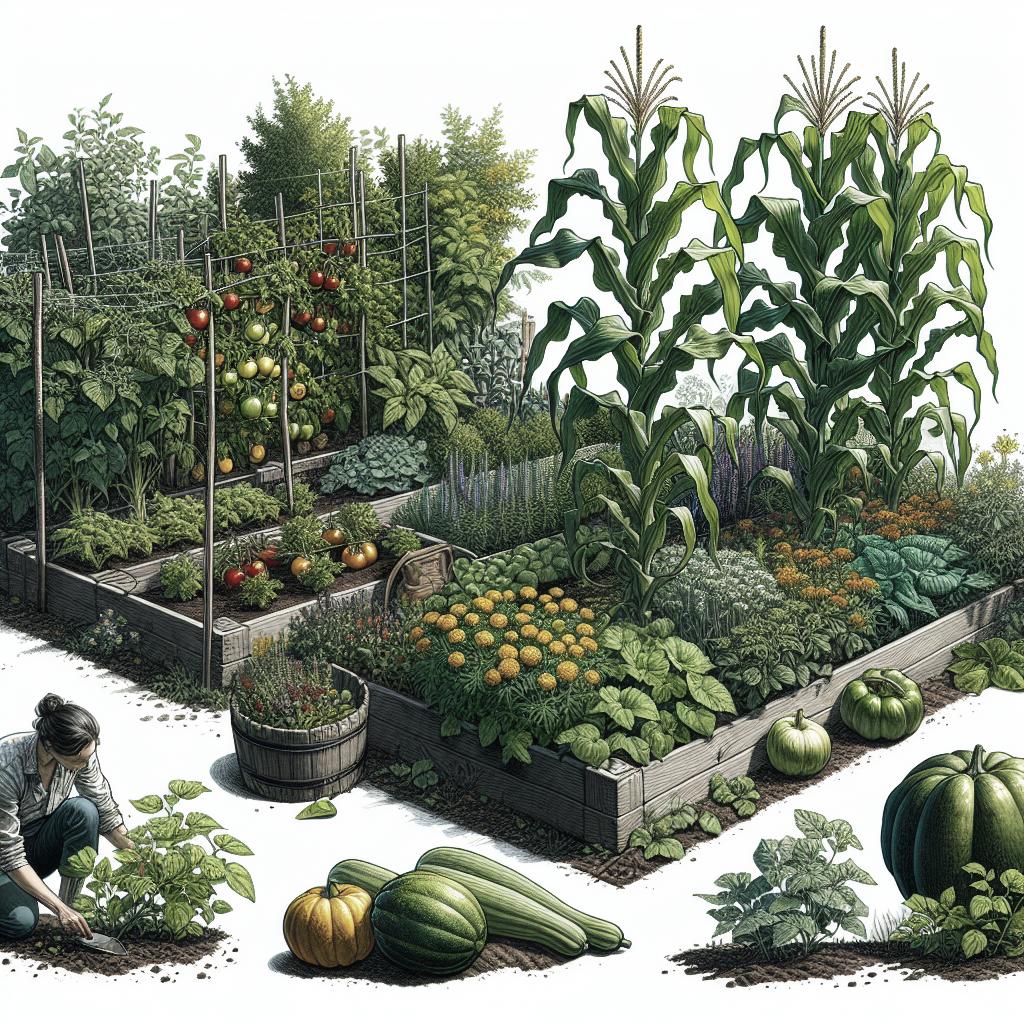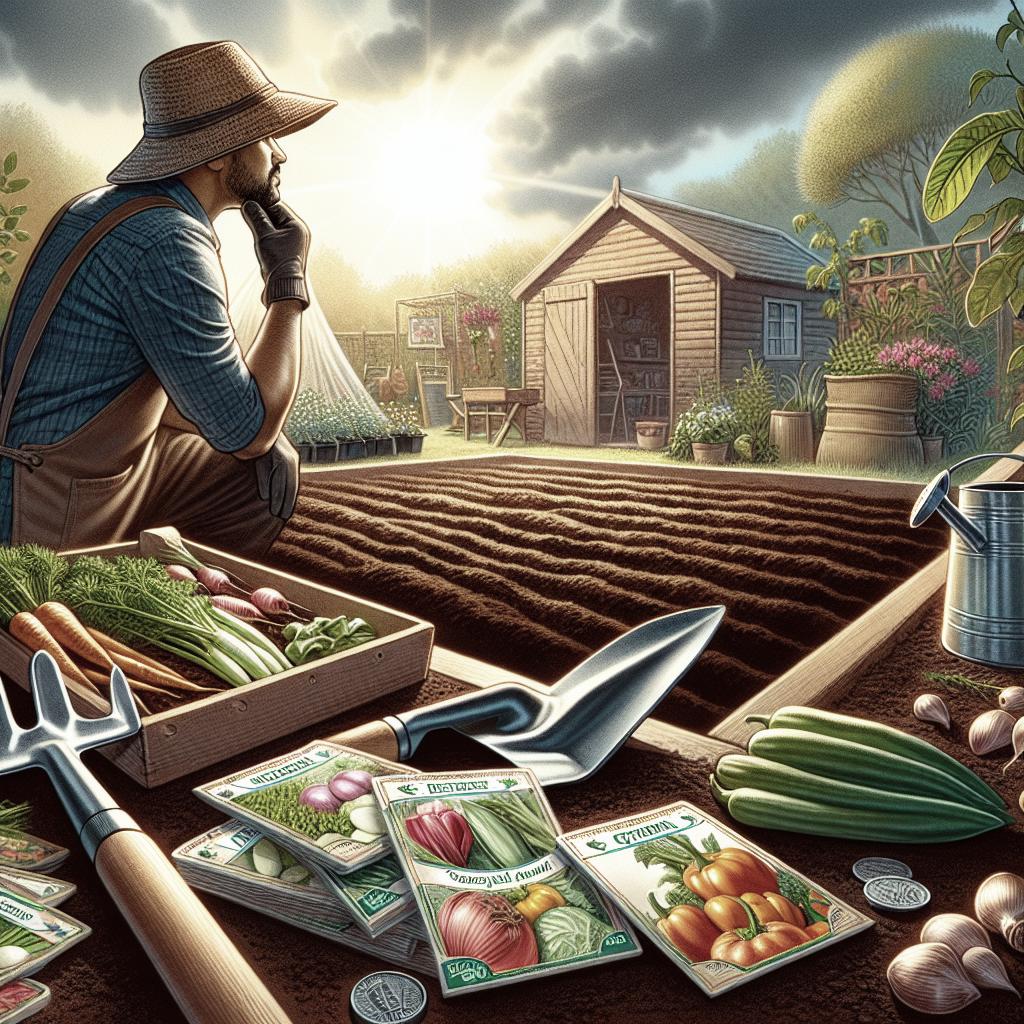“`html
How to Implement Companion Planting in Vegetable Patches
Companion planting is a time-honored gardening practice that involves strategically placing certain plants together to boost their growth, flavor, and resilience. This technique not only optimizes space but also encourages biodiversity, which can lead to healthier crops and reduced pest populations. Throughout this article, we will delve into various plant pairings that attract pollinators, deter pests, enhance flavors, and provide physical support. By integrating companion planting strategies into your vegetable patch, you’ll not only enjoy more abundant harvests but also contribute to a sustainable gardening ecosystem. This guide will also highlight which pairings to avoid, ensuring that your garden thrives throughout the growing season.
Plants to Attract Pollinators
Pollinators such as bees, butterflies, and other beneficial insects play a crucial role in the reproductive process of many plants. To maximize pollination, consider incorporating plants that are known to attract these helpful creatures. Flowers like marigolds, sunflowers, and zinnias are popular choices, as their bright blooms draw pollinators into the garden, ensuring that vegetable blossoms are more effectively fertilized.
Lavender and borage are also excellent additions due to their fragrance and nectar production, which entice pollinators. By planting these alongside vegetable crops, not only does the fruit yield improve, but a thriving pollinator population can be naturally sustained. Maintaining a diverse range of flowering plants ensures a longer bloom period, creating a reliable food source for pollinators throughout the growing season.
Plants for Pest Control
Plants to Repel Pests
Some plants are known to possess natural properties that repel common pests, acting as organic deterrents without the need for chemical intervention. Herbs such as basil, mint, and rosemary are known for their strong scents, which can deter insects like mosquitoes and aphids. Planting these herbs near susceptible crops can create a natural protective barrier, reducing the need for pesticides.
Additionally, garlic and onions can be planted among vegetables to ward off carrot flies and Japanese beetles. When strategically placed, these plants not only safeguard vegetable crops but also enrich the culinary diversity of the garden.
Plants to Distract Pests
Some plants are particularly good at drawing pests away from main crops, acting as sacrificial decoys. For instance, nasturtiums can lure aphids away, sparing your vegetables from infestations. These plants attract pests by presenting an alternative source of food, meaning the primary crops remain undisturbed and grow to their full potential.
Using this tactic, it’s crucial to monitor the distracting plant to ensure that it does not become overwhelmed, which could lead to pests transferring back to the primary crops. Consistent observation and management are key to employing this strategy effectively.
Plants to Attract Pest Predators
Encouraging natural pest predators, such as ladybugs and lacewings, is a vital component of an integrated pest management system. Plants like dill, fennel, and cosmos are highly effective at attracting these beneficial insects, which feast on unwanted pests.
By developing a habitat that supports predator species, gardeners can sustainably manage pest populations without relying on chemical interventions. These predator-attracting plants can be interspersed throughout the garden to provide a constant supply of beneficial insects across vegetable patches.
Plants to Improve Crop Flavour and Growth
Companion planting isn’t just about defense; it can also enhance the taste and growth of vegetables. For example, planting basil near tomatoes is said to improve the flavor and growth rate of tomatoes due to their complementary root interaction.
Similarly, radishes planted alongside carrots can loosen the soil and create space for carrot roots to expand, resulting in a better crop. These beneficial relationships are based on centuries of gardening experience and scientific observation, unlocking the full potential of each plant involved.
Other Types of Companion Plants
Physical Support and Protection
Certain plants offer structural support to their neighbors, providing a living trellis for climbing plants or shade for those sensitive to intense sun. For instance, planting corn with beans allows the beans to climb the sturdy stalks, eliminating the need for additional staking.
Likewise, taller plants can offer shade to leafy greens that may suffer from scorching in the hottest part of the day, maintaining moister conditions in the soil underneath. This natural symbiosis can lead to a more diverse and productive garden ecology.
Inhibiting Weeds
Groundcover plants such as clover or alyssum spread across the soil, suppressing weed growth by covering the ground and reducing light levels for germinating weed seeds. Their dense foliage not only inhibits weeds but also helps to conserve soil moisture.
Incorporating these low-growing plants within a vegetable patch can reduce the need for weeding and augment the garden’s overall health and appearance with minimal effort from the gardener.
Improving Soil
Companion plants can also enhance soil quality through nutrient cycling and fixing. Legumes, for instance, can fix atmospheric nitrogen into the soil, enriching it for subsequent plantings. This ability makes them perfect partners for nitrogen-hungry plants like cabbages.
Additionally, deep-rooted plants such as comfrey draw nutrients from deep in the soil, releasing them as the leaves decompose, providing a natural fertilizer for neighboring plants. This dynamic not only strengthens plant resilience but also promotes sustainable garden practices.
Bad Companions
While companion planting offers numerous benefits, it’s important to be aware of plant pairings that can lead to detrimental effects. Certain plants release allelopathic chemicals that inhibit the growth of neighboring plants.
For instance, planting certain alliums near legumes can negatively affect their growth due to competition for similar resources. It’s essential to research specific plant combinations and consult reliable sources or experienced gardeners when planning your vegetable patch to avoid counterproductive pairings.
References and Further Reading
For those interested in expanding their understanding of companion planting, numerous resources are available. Recommended readings include “Carrots Love Tomatoes” by Louise Riotte, a comprehensive guide to plant partnerships, and “The Vegetable Gardener’s Guide to Permaculture” by Christopher Shein, which offers a broader context on sustainable gardening practices.
Additionally, online platforms like university extension websites and gardening forums provide valuable insights and community support for novice and experienced gardeners alike. Engaging with these resources can deepen your knowledge and refine your companion planting techniques over time.
Summary of Main Points
| Category | Purpose | Examples |
|---|---|---|
| Attract Pollinators | Enhance pollination | Marigolds, Sunflowers, Lavender |
| Pest Control | Repel and distract pests, attract predators | Basil, Nasturtiums, Dill |
| Improve Flavour and Growth | Enhance taste and health of crops | Basil with Tomatoes, Radishes with Carrots |
| Physical Support | Provide structure and protection | Corn with Beans, Shade from taller plants |
| Weed Inhibition | Suppress weed growth | Clover, Alyssum |
| Soil Improvement | Enhance soil nutrients and fertility | Legumes, Comfrey |
| Bad Companions | Avoid harmful combinations | Alliums with Legumes |
“`

